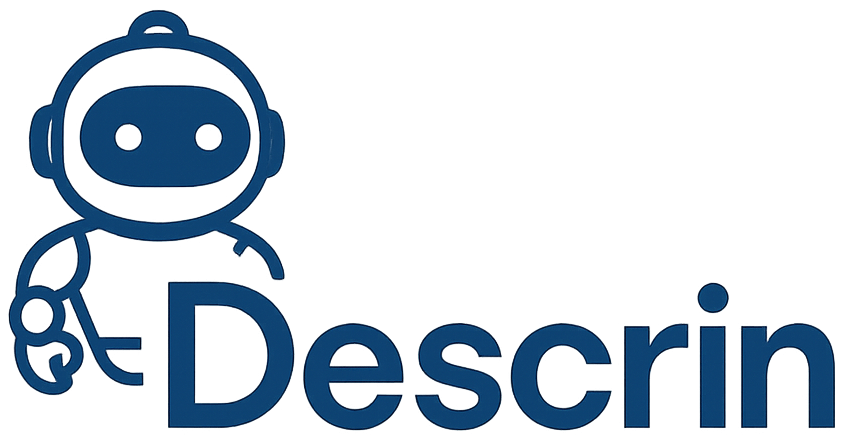Harness Productivity & Automation for Growth

In today’s fast-changing digital world, every development team faces a big challenge. They need to stay ahead while keeping their performance high. I learned that being productive isn’t just about working hard. It’s about working smarter.
Digital transformation is more than just a trend. It’s a must for businesses wanting to succeed. The right technology can make complex tasks simple and efficient. This leads to amazing growth.
Today, development teams must create new solutions quickly and well. By using the latest automation, you can unlock your team’s full potential. This creates lasting advantages over competitors.
Table of Contents
Understanding Modern Productivity Challenges in Development
Today, development teams face many complex challenges. They need to optimize workflows and automate processes to overcome these hurdles. This is key to improving team performance and project success.
Modern development environments have several critical productivity constraints. These can slow down innovation and efficiency. Understanding these challenges is the first step to creating better development processes.
Common Productivity Bottlenecks
- Inefficient communication channels
- Outdated development tools
- Manual repetitive tasks
- Inconsistent development environments
Impact of Technical Debt on Team Efficiency
Technical debt can really hurt your team’s productivity. Accumulated shortcuts and quick fixes create long-term challenges that slow down development and make maintenance harder.
| Technical Debt Aspect | Productivity Impact |
|---|---|
| Code Complexity | Reduced development speed by 40% |
| Legacy System Maintenance | Increased debugging time by 35% |
| Outdated Architecture | Decreased team agility by 25% |
Current Development Environment Limitations
Local development environments often pose big challenges. These include:
- Environment drift between team members
- Insufficient computational resources
- Time-consuming setup and maintenance
- Lack of scalable infrastructure
By recognizing these challenges, development teams can start using process automation. This can improve efficiency and create stronger development ecosystems.
Harness Productivity & Automation Tools for Success
Unlocking peak performance in software development needs smart task management and the latest productivity hacks. Modern engineering teams are changing their workflows. They use powerful automation tools to make complex processes easier and more efficient.
Your development ecosystem can get a lot better with the right tools. Some key productivity hacks include:
- Automated code review systems
- AI-powered task management platforms
- Intelligent workflow optimization tools
- Real-time collaboration software
Harness AI Productivity Insights (AIPI) gives engineering leaders important data on productivity gains. It analyzes tool performance and team efficiency. This helps organizations make smart tech investment choices.
“Automation isn’t about replacing human creativity—it’s about amplifying our potential to innovate.” – Tech Leadership Perspective
When picking productivity tools, look at these important criteria:
- Integration capabilities with existing systems
- Scalability and flexibility
- User-friendly interface
- Measurable efficiency metrics
Using automation tools wisely can change your development process. It cuts down on manual work and lets your team focus on creative, innovative tasks.
Revolutionizing Development with AI-Powered Productivity Tools
The world of software development is changing fast with AI tools. These tools make coding faster and more efficient. They cut down on time-wasting tasks and boost development speed.
Today’s developers use AI coding assistants to save time. These tools are not just small upgrades. They are big changes that change how we code.
Google Gemini Code Assist Integration
Google’s Gemini Code Assist helps developers with smart code suggestions. It offers:
- Real-time code recommendations
- Contextual understanding of programming patterns
- Automatic error detection and prevention
GitHub Copilot Implementation
GitHub Copilot is another AI coding tool. It uses machine learning to write code snippets and functions from natural language.
| AI Tool | Key Strengths | Productivity Impact |
|---|---|---|
| Google Gemini | Contextual Code Suggestions | 30-40% Reduction in Coding Time |
| GitHub Copilot | Automated Code Generation | 25-35% Increased Development Speed |
Measuring AI Tool Effectiveness
To check how well these AI tools work, we need to look at certain metrics. Developers can measure:
- Code generation speed
- Error reduction rates
- Overall development efficiency
The future of software development is here, with AI-powered tools turning complex coding challenges into streamlined, intelligent processes.
Cloud Development Environments: Enhancing Team Efficiency

Cloud Development Environments (CDEs) are changing how teams work. They offer instant, secure, and standard development spaces. This solves old infrastructure problems.
Your team gets cloud-based environments ready to go. They make workflow smoother and increase productivity. CDEs also make sure everyone works in the same, best conditions.
- Instant environment provisioning with a single click
- Consistent development configurations across teams
- Enhanced security through centralized management
- Reduced onboarding time for new developers
Cloud development environments help solve big problems like different environments and limited resources. They let your team focus on coding, not setup issues.
Modern development needs agile, scalable infrastructure for quick innovation.
CDEs offer better teamwork, version control, and tool integration. Your team can work from anywhere. They keep up with excellence and code quality.
Streamlining Workflows with DevOps Automation
DevOps automation is key for modern software teams. It boosts workflow and process automation. With smart tools, you can cut down on manual work and speed up projects.
At the heart of DevOps automation is finding ways to reduce obstacles in your pipeline.
Continuous Integration Benefits
Continuous Integration (CI) is a strong way to better code quality and solve development delays. It automates code checks and tests. This helps your team:
- Find bugs quicker
- Overcome integration hurdles
- Boost code quality
- Speed up development
Deployment Automation Strategies
Good deployment automation cuts down on human mistakes and makes releases smoother. Here are some key strategies:
| Strategy | Key Benefits |
|---|---|
| Blue-Green Deployments | Less downtime, easy to go back |
| Canary Releases | Roll out features slowly, lower risk |
| Container Orchestration | Scalable, consistent deployments |
Infrastructure as Code Management
Infrastructure as Code (IaC) lets your team manage infrastructure with code. This ensures consistent and repeatable environments. It treats infrastructure setups like software code, offering:
- Version control for infrastructure
- Standardized environment creation
- Less configuration drift
- Better security and compliance
“Automation is not about replacing human creativity, but amplifying it through intelligent systems.” – DevOps Innovation Summit
Using these DevOps automation strategies will make your software development workflows more efficient and reliable.
Maximizing Developer Productivity Through Standardization

Standardization is key for development teams aiming for top performance. It can boost your team’s productivity by setting up consistent environments and workflows. This makes teamwork smoother and cuts down on unnecessary complexity.
Standardization helps teams work better together by setting clear rules. It uses tools like devcontainer.json to make sure everyone works in the same way. This leads to predictable and reliable development environments.
- Reduce onboarding time for new team members
- Improve code quality and consistency
- Minimize configuration-related challenges
- Enhance overall team collaboration
When you start standardizing, aim for a balance. You want to support creativity while keeping things structured. This balance lets your team innovate while following important guidelines.
| Standardization Aspect | Productivity Impact |
|---|---|
| Development Environment Configuration | Reduces setup time by 60% |
| Coding Style Guidelines | Improves code readability by 45% |
| Workflow Automation | Increases team efficiency by 35% |
By adopting these standardization methods, your team can reach new heights of efficiency. It changes how you develop software for the better.
Security and Governance in Automated Workflows
Digital transformation needs strong security to protect your most important assets. Automated workflows bring great benefits but also risks that need careful handling.
Today’s development environments need strong security that balances safety and efficiency. Your digital setup needs smart governance to stay flexible yet controlled.
Role-Based Access Control Implementation
Role-based access control (RBAC) gives team members the right permissions. Key steps include:
- Defining clear roles in your organization
- Setting up detailed access levels
- Automating permission management
- Watching how users access things
Automated Security Scanning
Early detection of vulnerabilities is key to a safe development space. Advanced scans help you:
- Spot security risks quickly
- Check source code for weaknesses
- Automatically scan cloud setups
- Make detailed security reports
Compliance Monitoring Systems
Your compliance monitoring should fit right into your workflows. Good systems give you live updates, helping you stay compliant and efficient.
“Security is not a product, but a process.” – Bruce Schneier
By using these governance strategies, you turn security challenges into chances for better digital strength.
Analytics and Performance Tracking for Growth

Unlocking your team’s potential is more than just hard work. You need smart hacks and boosters for better development. Analytics and tracking give you the insights for growth and improvement.
Today’s teams need strong analytics tools to see how they’re doing. By tracking important metrics, you can find and fix problems. This helps speed up your software delivery.
- Measure build and deployment times
- Track cloud resource utilization
- Monitor deployment frequency
- Analyze development team productivity
The right tracking turns data into useful info. With detailed dashboards, you get a clear view of your development world.
| Metric Category | Key Performance Indicators | Impact on Productivity |
|---|---|---|
| Build Performance | Average Build Time | Reduces development cycle delays |
| Deployment Efficiency | Deployment Frequency | Accelerates time-to-market |
| Resource Management | Cloud Resource Utilization | Optimizes infrastructure costs |
Effective analytics turn complexity into clarity, empowering your team to achieve unprecedented levels of productivity and innovation.
Measuring ROI of Automation Implementation
Figuring out the return on investment for automation needs a smart plan. You must understand how it boosts your work. Saving time is key to seeing the real value of new tech.
Great companies use detailed metrics to check how well their automation works. They look at how it changes their work and money-making skills.
Productivity Metrics and KPIs
Keeping an eye on important numbers shows how well automation tools work. Key areas to watch include:
- How fast development gets done
- How much better code quality is
- How well resources are used
- How many errors are cut down
Cost-Benefit Analysis Framework
Creating a solid cost-benefit analysis means looking at both direct and indirect benefits of automation. Key points to consider are:
- Costs to start up
- Expenses to keep it running
- How much more productive it makes you
- Long-term efficiency boosts
Long-term Value Assessment
Your automation plan should look beyond quick wins. Strategic evaluation means seeing how it grows, adapts, and fits with future tech.
Automation is not just a cost-saving measure, but a transformative approach to operational excellence.
By carefully measuring these areas, you can make smart choices about your tech. This ensures your development keeps getting better.
Conclusion
Using productivity and automation tools is key for modern businesses to stay ahead. Digital transformation opens up new ways to make work easier, more efficient, and innovative. It helps your development teams work better together.
By using AI, cloud environments, and DevOps automation, you build a strong base for growth. These tools improve your current work and help you keep up with new tech and market needs.
Keeping your automation safe and controlled is very important. Use good monitoring, access controls, and performance tracking. This keeps your tech safe and supports your business goals while avoiding risks.
Remember, digital transformation is a never-ending path. Always check how your automation is doing, improve your plans, and look for new tech to boost your team’s work. Your drive for innovation will lead to lasting success in today’s fast-changing digital world.
FAQ
What are the primary productivity challenges facing modern development teams?
Modern teams struggle with slow communication, old tools, and too much technical debt. They also face limits in their current work environments. These problems slow down progress, lower team efficiency, and block innovation.
How can AI-powered productivity tools improve development workflows?
Tools like Google Gemini Code Assist and GitHub Copilot make coding faster and easier. They cut down on manual work and offer smart code ideas. This helps developers write better, find errors sooner, and work more efficiently by automating tasks.
What are the benefits of Cloud Development Environments (CDEs)?
CDEs make onboarding faster and boost developer productivity. They also improve security and get rid of setup hassles. These environments are ready to use, set up, and standard, solving issues like environment drift and resource limits.
How does DevOps automation improve software delivery?
DevOps automation makes workflows smoother by enabling Continuous Integration (CI). It cuts down on errors, speeds up releases, and boosts code quality. It helps teams use Infrastructure as Code (IaC) and standardize processes for better software delivery.
Why is standardization important in development environments?
Standardization boosts productivity by creating consistent environments and workflows. It leads to better code quality, easier onboarding, and better teamwork. It also reduces friction by setting clear guidelines.
How can teams ensure security in automated development workflows?
Teams can ensure security with Role-Based Access Control (RBAC) and automated scans. They should also keep up with compliance monitoring. These steps protect resources, find vulnerabilities early, and follow industry standards.
What metrics are important for measuring development productivity?
Important metrics include build times, deployment frequency, and code quality. Also, time to resolution, developer velocity, and resource use are key. These metrics show how well teams are doing and where they can improve.
How can teams measure the ROI of automation tools?
Teams can measure ROI by analyzing time savings, error reduction, and faster deployments. Tools like Harness AI Productivity Insights help compare productivity and show the value of automation.
What are the key considerations when implementing productivity and automation tools?
Consider tool compatibility, team learning, and security features. Also, measure productivity gains and balance automation with creativity. Choose tools that fit your workflow and offer real benefits.
How can small to medium-sized teams start their digital transformation journey?
Small teams can start by adopting tools like AI coding assistants or cloud environments. Begin with tools that are easy to start with, offer clear benefits, and can grow with your team.


